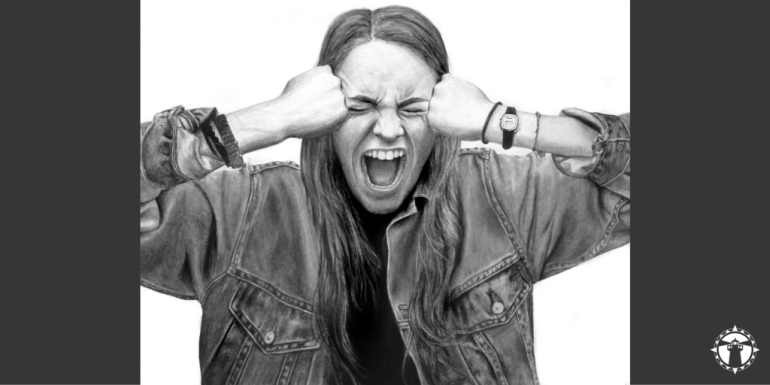- Our School
- Our Advantage
- Admission
- Elementary•Middle School
- High School
- Summer
- Giving
- Parent Resources
- For Educators
- Alumni
« Back
The Power of Self-Expression
March 23rd, 2016

By Kimberly Hildebrandt as the summation of an interview with Beth Jamieson
In March, the Boston Globe announced its Scholastic Art Awards. I was blown away by the technical skill and visual expression, but even more so for the depth conveyed through the art. I was particularly struck by an emotional series of charcoal pieces inspired by the phrase, “Something You Hide” (check out a few of the images in this post) from Landmark High School students, a school for students with language-based learning disabilities, such as dyslexia. Landmark had again won 22 “keys” and 20 honorable mentions. It made me wonder,“What about art makes these students come alive?”
Students with learning differences have, for most of their lives, been picked on, labeled, pulled apart, and made to feel so much worse than “different” in the place where they spend most of their waking hours: school. All the time, school is focused on how to fix them, not just their learning but their selves. The students often build a wall of self-protection, a wall that hides their real self.
The thing I love about art, and in particular the Landmark Art Department, is the powerful place it holds for those who struggle with feeling pulled apart. Art at Landmark is not only a safe place for students to explore themselves, it is one in which students are encouraged to take back ownership of and cultivate their self...and from that place, express.
So how is it done? How is this depth of self-expression and skill cultivated in students? And what can every school room learn through these student’s success?
When students walk through the doors of the Landmark art room, they are not only accepted as themselves, but encouraged to be themselves. They are no longer labeled as someone with a learning difference who needs to be fixed. They are viewed as highly skilled and intelligent (a la Howard Gardner’s Multiple Intelligences). The art room is a place of learning about both visual and self expression, and further learning how to critique not criticize. Students and teachers alike must work hard and give lots of helpful feedback.

In speaking with Beth Jamieson, the co-chair of the art department at Landmark High School, I learned more about their teaching process. The staff must be knowledgeable, not only in their profession, but also in working with students with learning differences. They employ Landmark’s Six Teaching Principles in working with students. While art teachers don’t explicitly focus on the students learning differences, staff know how to break skill work into smaller, more manageable units, ask questions that are directed and not too open ended, push just the right amount so as to help students reach their pinnacle without breaking apart. Teachers cultivate an environment where mistakes are expected and are encouraged as part of the process; where struggle is healthy and is the path to a tangibly better product.
While art is certainly not everyone’s strong suit, even for students with learning differences, this notion of healthy struggles, self acceptance, and “learning difference as strength” is key to building any students self-efficacy and love for learning. As an institution, Landmark celebrates and lifts up the creative brains of their students so students see how they matter beyond their difference and even because of it.
Kimberly Hildebrandt is the Social Media Coordinator for Landmark School. She joined Landmark in 2005 as a high school math teacher and taught Algebra and Pre-Calculus until 2015. She also worked for two years teaching math at New England Academy. She holds a Masters in Moderate Special Education from Simmons.
Posted in the category Learning Disabilities.



















